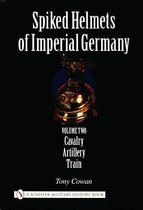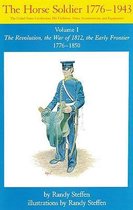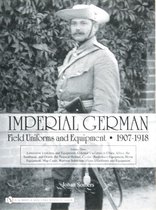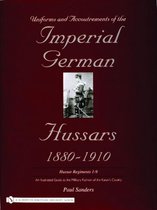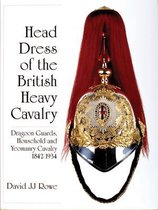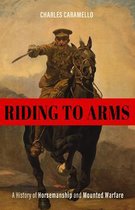The Armored Horse In Europe,1480-1620
Afbeeldingen
Sla de afbeeldingen over
Artikel vergelijken
Auteur:
Stuart W. Pyhrr
Donald Larocca
Co-auteur:
Dirk H. Breiding
Dirk H Breiding
- Engels
- Paperback
- 9780300107647
- 30 mei 2005
- 64 pagina's
Samenvatting
The group of armored equestrian figures forming the centerpiece of the permanent arms and armor exhibition has, for almost a century, been one of the most popular and dramatic areas of the Metropolitan Museum. Aside from the bards (complete horse armors of plate) displayed on the figures, the Museum has many important examples in its reserve collection that are rarely shown, often unpublished, and largely unknown even to specialists. In fact, armor for the horse has generally received much less scholarly attention than that designed for the rider, this volume being the first exclusively devoted to the subject.
The forty objects presented here comprise all the main types of horse defense, each intended to protect a different part of the animal's body: shaffron (head), crinet (neck), peytral (breast and shoulders), flanchard (ribs and abdomen), and crupper (hindquarters). Their range is broad - from a set of rudimentary peytral and crupper plates made of leather (the only examples of this kind in the United States) to an elaborately decorated steel shaffron produced for the Polish prince Nikolaus "the Black" Radziwill. A carved ivory chess piece from about 1370, one of the earliest three-dimensional representations of a European horse in a full bard; an armored saddle with its original velvet upholstery; whimsical ear guards in the shape of dolphins; and a "blind" shaffron made without eye openings to prevent a horse from shying during a joust - all cast light on the various forms and styles developed by armorers of the period. Also revealed is the evolving complexity of the decorative techniques and motifs employed, as horse armor was embossed, etched, gilded, and painted, and ornamentation evolved from simple foliate scrolls to fully realized figural scenes derived from classical mythology.
Placing these objects in context is an essay tracing the history of European horse armor from its revival in the twelfth century (after its disappearance with the fall of Rome) through its flowering in the Renaissance to its eventual obsolescence in the early 1600s. Other texts include a discussion of the featured objects in relation to those in the Museum's permanent display and an overview of armored saddles and saddle steels.
Symbol of a romantic age of chivalry, the knight was inseparable from his horse. This invaluable study reveals another aspect of that interdependence: as armorers devised protective coverings for both rider and animal, they also created lasting works of art.
This catalogue is issued in conjunction with an exhibition held at The Metropolitan Museum of Art, New York, from February 15, 2005, to January 15, 2006.
The forty objects presented here comprise all the main types of horse defense, each intended to protect a different part of the animal's body: shaffron (head), crinet (neck), peytral (breast and shoulders), flanchard (ribs and abdomen), and crupper (hindquarters). Their range is broad - from a set of rudimentary peytral and crupper plates made of leather (the only examples of this kind in the United States) to an elaborately decorated steel shaffron produced for the Polish prince Nikolaus "the Black" Radziwill. A carved ivory chess piece from about 1370, one of the earliest three-dimensional representations of a European horse in a full bard; an armored saddle with its original velvet upholstery; whimsical ear guards in the shape of dolphins; and a "blind" shaffron made without eye openings to prevent a horse from shying during a joust - all cast light on the various forms and styles developed by armorers of the period. Also revealed is the evolving complexity of the decorative techniques and motifs employed, as horse armor was embossed, etched, gilded, and painted, and ornamentation evolved from simple foliate scrolls to fully realized figural scenes derived from classical mythology.
Placing these objects in context is an essay tracing the history of European horse armor from its revival in the twelfth century (after its disappearance with the fall of Rome) through its flowering in the Renaissance to its eventual obsolescence in the early 1600s. Other texts include a discussion of the featured objects in relation to those in the Museum's permanent display and an overview of armored saddles and saddle steels.
Symbol of a romantic age of chivalry, the knight was inseparable from his horse. This invaluable study reveals another aspect of that interdependence: as armorers devised protective coverings for both rider and animal, they also created lasting works of art.
This catalogue is issued in conjunction with an exhibition held at The Metropolitan Museum of Art, New York, from February 15, 2005, to January 15, 2006.
Productspecificaties
Wij vonden geen specificaties voor jouw zoekopdracht '{SEARCH}'.
Inhoud
- Taal
- en
- Bindwijze
- Paperback
- Oorspronkelijke releasedatum
- 30 mei 2005
- Aantal pagina's
- 64
- Illustraties
- Nee
Betrokkenen
- Hoofdauteur
- Stuart W. Pyhrr
- Tweede Auteur
- Donald Larocca
- Co Auteur
- Dirk H Breiding
- Hoofduitgeverij
- Yale University Press
Vertaling
- Originele titel
- The Armored Horse in Europe, 1480-1620
Overige kenmerken
- Editie
- New title
- Verpakking breedte
- 0 mm
- Verpakking hoogte
- 0 mm
- Verpakking lengte
- 0 mm
- Verpakkingsgewicht
- 426 g
EAN
- EAN
- 9780300107647
Je vindt dit artikel in
- Categorieën
- Taal
- Engels
- Boek, ebook of luisterboek?
- Boek
- Beschikbaarheid
- Leverbaar
- Studieboek of algemeen
- Algemene boeken
Kies gewenste uitvoering
Bindwijze
: Paperback
Prijsinformatie en bestellen
De prijs van dit product is 64 euro en 05 cent. Dit is een tweedehands product.
Alleen tweedehands
Als nieuw
1 - 2 weken
Verkoop door
Bogamo 13 - Boeken outlet
- Bestellen en betalen via bol
- Prijs inclusief verzendkosten, verstuurd door Bogamo 13 - Boeken outlet
- 30 dagen bedenktijd en gratis retourneren
Shop dit artikel
Rapporteer dit artikel
Je wilt melding doen van illegale inhoud over dit artikel:
- Ik wil melding doen als klant
- Ik wil melding doen als autoriteit of trusted flagger
- Ik wil melding doen als partner
- Ik wil melding doen als merkhouder
Geen klant, autoriteit, trusted flagger, merkhouder of partner? Gebruik dan onderstaande link om melding te doen.

